Just 32 percent of American workers report feeling engaged on the job, according to a 2015 Gallup Poll. When people “check out” at work, productivity suffers. Happily, changes in design can help, especially in an office environment. Employers can create great office layouts by incorporating functional furniture, improving the furniture arrangement, and adding color and texture. A few changes can breathe new life into the workplace, resulting in happier and more productive employees.
Open vs. Private Layouts
The most successful office layout depends on the type of work involved. For instance, if employees are required to engage in confidential conversations on a frequent basis or absorb large amounts of reading material, then a setting with private offices is the obvious choice. If most of the day involves collaborative work or group meetings, then an open concept makes the most sense. If you’re still not sure, then why not poll staff to see what they prefer?
The Perfect Mix
A report from The Brookings Institution suggests that many businesses benefit from a blend of open and private spaces. A large, open work area encourages a sense of community and saves money on heating, cooling, and cleaning. Meanwhile, a few private offices help prevent distraction, reduce noise, and provide a secure work environment when needed. A private work room or library with a no-talking rule makes a quiet option for focus and concentration, while a centralized conference room with glass walls keeps business meetings moving at a good clip.
Furniture and Design
Great office layouts start with stylish and practical furniture. When it comes to small business office design, two employees can share a table or desk without too much distraction, but if you have lots of workers occupying one spacious room, then invest in half-height desk dividers or booth seating. Huddle spaces with tall tables and no chairs offer an ideal option for short meetings, and plug-and-play work benches placed near common areas provide convenient spaces for sending a quick email.
To promote a healthy workplace, many businesses provide adjustable desks, ergonomic chairs, noise-cancelling headphones, a comfortable break room, and plenty of natural light.
Color and Texture in the Workplace
Different colors promote office productivity in varying ways. The color red is thought to boost energy and motivation, while yellow evokes a happy, creative vibe. Because it has a calming effect, the color blue makes sense for employees working long hours, and green hues encourage good communication and balance in the workplace.
Texture takes an office from cold and sterile to warm and welcoming. Employers can add texture with:
- Exposed brick walls and wood beams
- Woven area rugs and throw pillows
- Fabric window treatments
- Paintings and sculptures
- Baskets and pottery
The Importance of Natural Elements
In addition to adding texture to an office environment, natural elements offer a variety of other benefits like greater wellbeing and increased productivity. Plants like philodendrons, devil’s ivy, and fig trees require little maintenance, and they improve air quality by absorbing pollutants and carbon dioxide. Other design elements that bring the outdoors in include wooden walls or room dividers, stone tile flooring, and large windows with natural views.
Comfortable office design plays a big role when it comes to worker satisfaction, and CORT Furniture Rental can help. As a company grows and office design evolves, renting office furniture allows employers to adapt quickly with new and stylish pieces.





